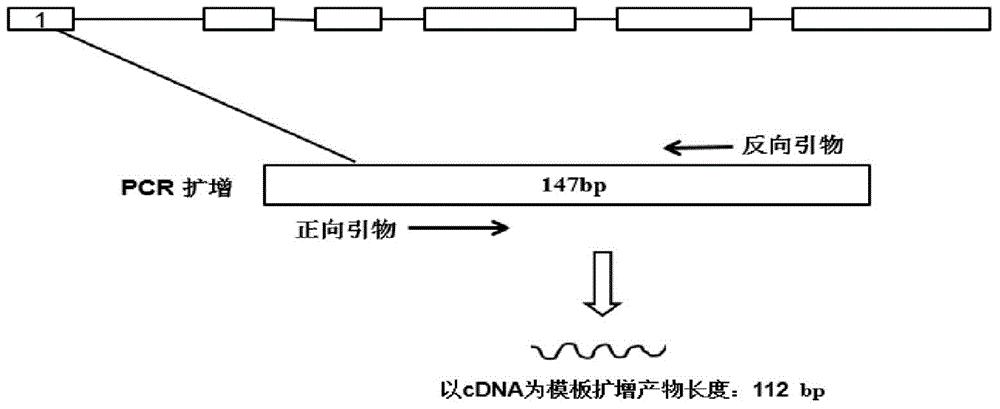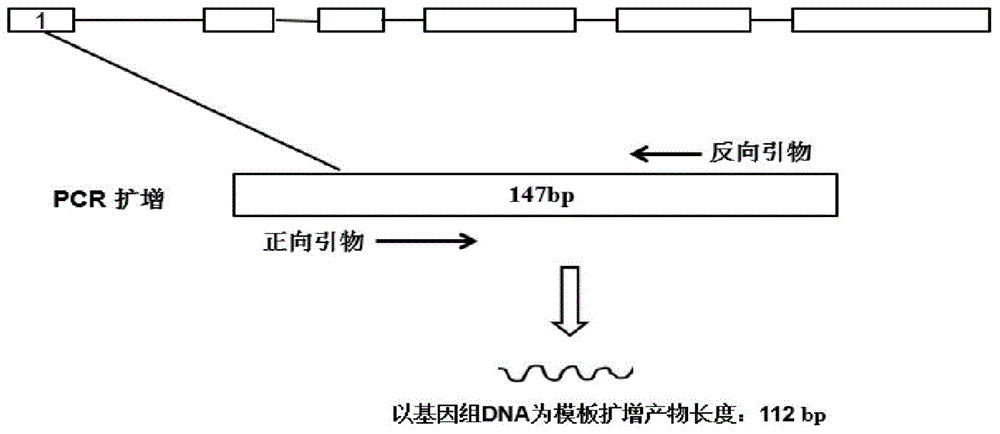Method for detecting whether genome DNA contamination exists in cDNA sample of watermelon
A genome and watermelon technology, which is applied in the field of detection of genomic DNA contamination in cDNA samples, can solve the problems of omission, genomic DNA not being completely removed, and no way to detect genomic DNA removal, etc., to achieve the effect of low detection cost and high sensitivity
- Summary
- Abstract
- Description
- Claims
- Application Information
AI Technical Summary
Problems solved by technology
Method used
Image
Examples
Embodiment 1
[0019] The expression analysis of embodiment 1 watermelon DNAJ gene
[0020] (1) Acquisition of watermelon gene sequence and structure information:
[0021] DnaJ protein is a molecular chaperone widely present in plants. A large number of studies have shown that this protein participates in various biological processes and plays an important role in the growth and development of organisms (Overexpression of tomato chloroplast-targeted DnaJ protein enhancestolerancetodroughtstressandresistancetoPseudomonassolanacearumintransgenictobacco. GuodongWang; GuohuaCai; FanyingKong; YongshengDeng; Nana Ma; Qingwei Meng. Plant Physiology and Biochemistry. 2014-05-22). Accession number of DNAJ gene (ID: AF124139.1) Reference Selection of internal control genes for quantitative real-time RT-PCR studies during tomato development process. Marino Expósito-Rodríguez, Andrés A Borges, Andrés Borges-Pérez, José APérez. BMC Plant Biol. 2008; 8:131. Accessed from NCBI ( .nlm.nih.gov / ) to download...
PUM
 Login to View More
Login to View More Abstract
Description
Claims
Application Information
 Login to View More
Login to View More - R&D
- Intellectual Property
- Life Sciences
- Materials
- Tech Scout
- Unparalleled Data Quality
- Higher Quality Content
- 60% Fewer Hallucinations
Browse by: Latest US Patents, China's latest patents, Technical Efficacy Thesaurus, Application Domain, Technology Topic, Popular Technical Reports.
© 2025 PatSnap. All rights reserved.Legal|Privacy policy|Modern Slavery Act Transparency Statement|Sitemap|About US| Contact US: help@patsnap.com



